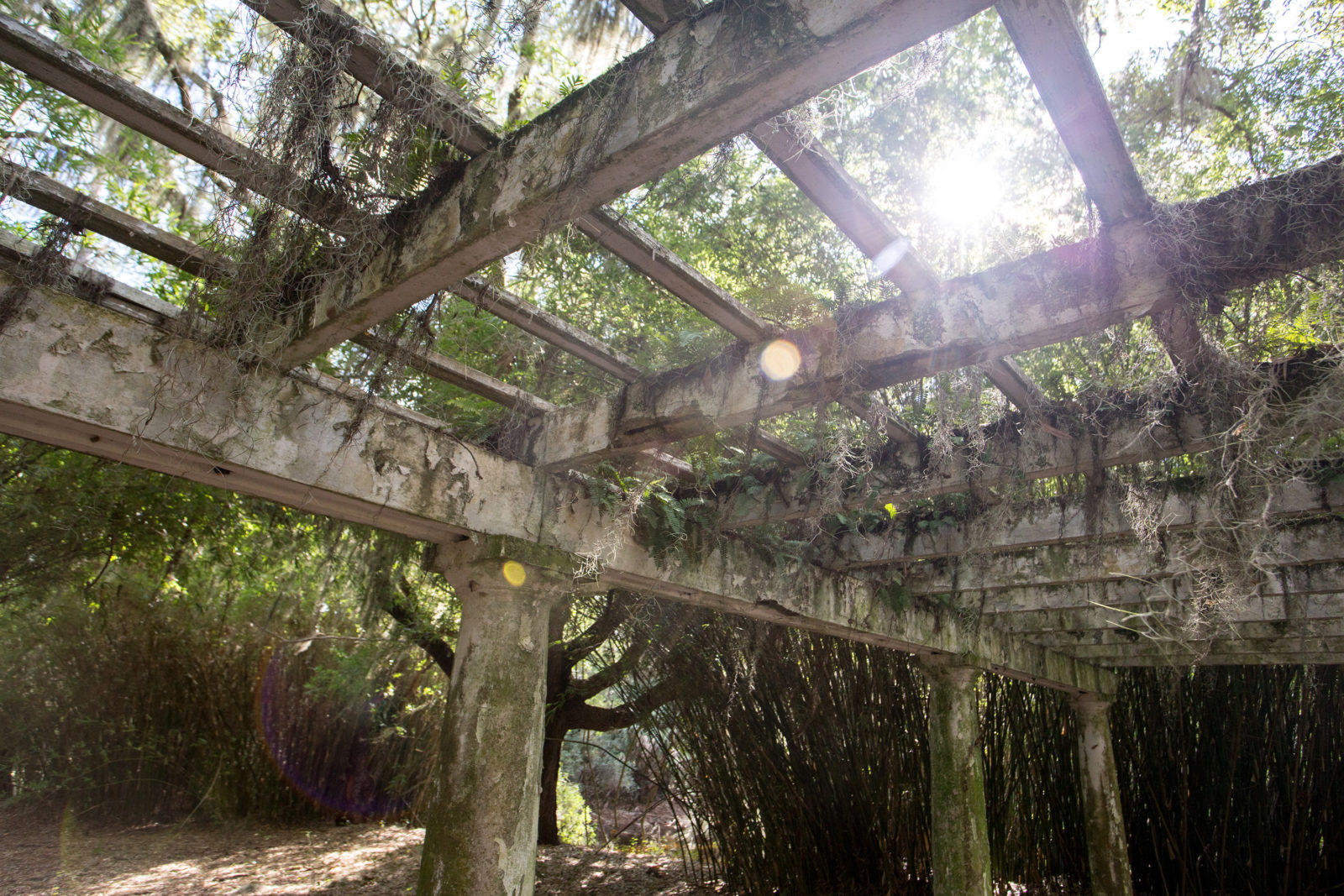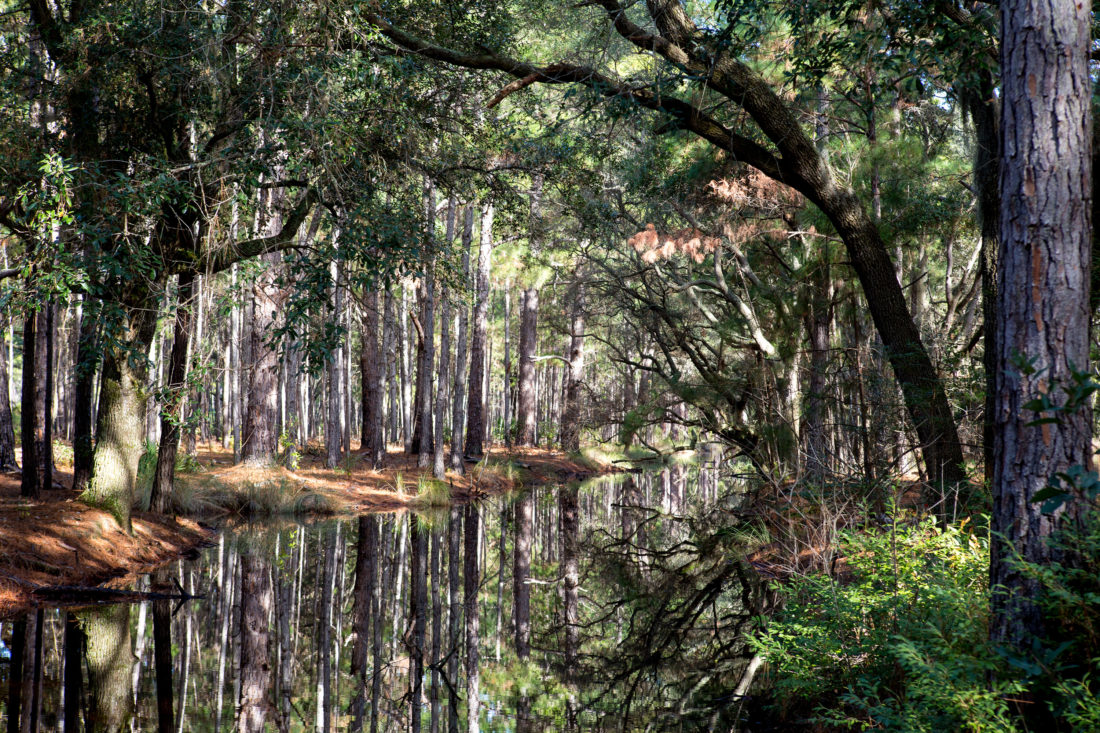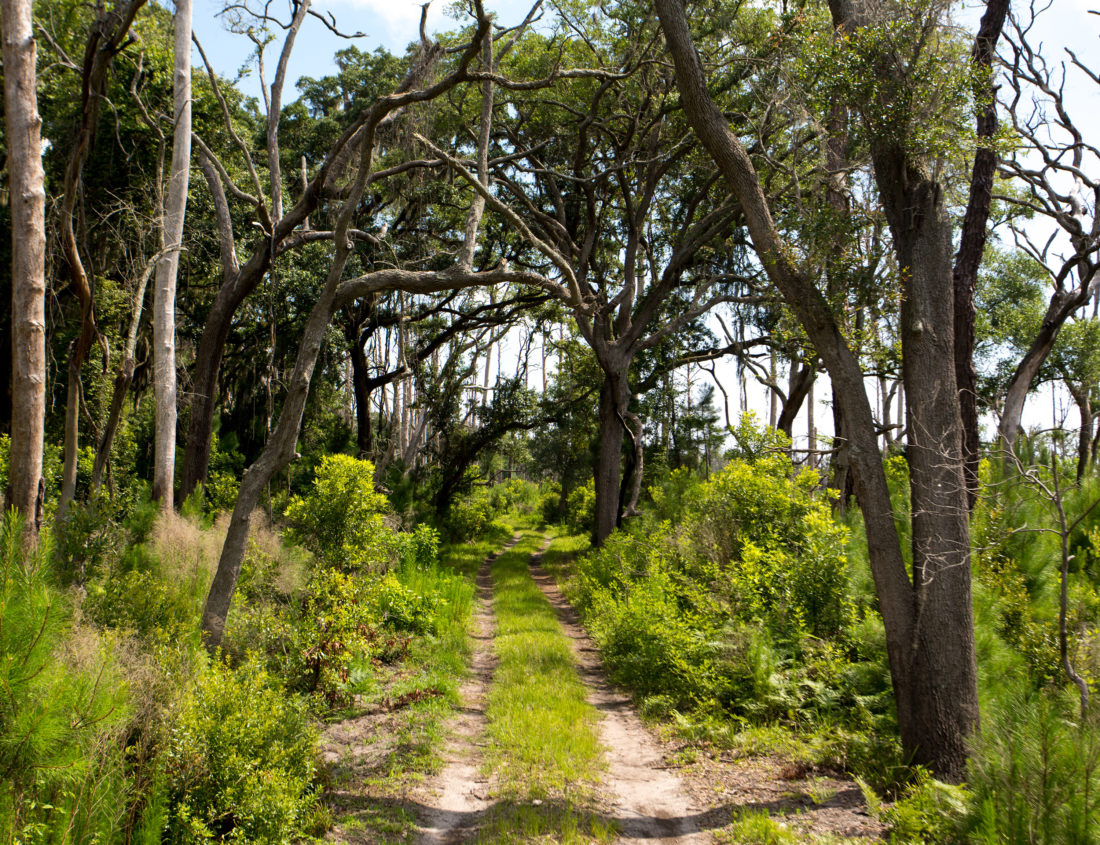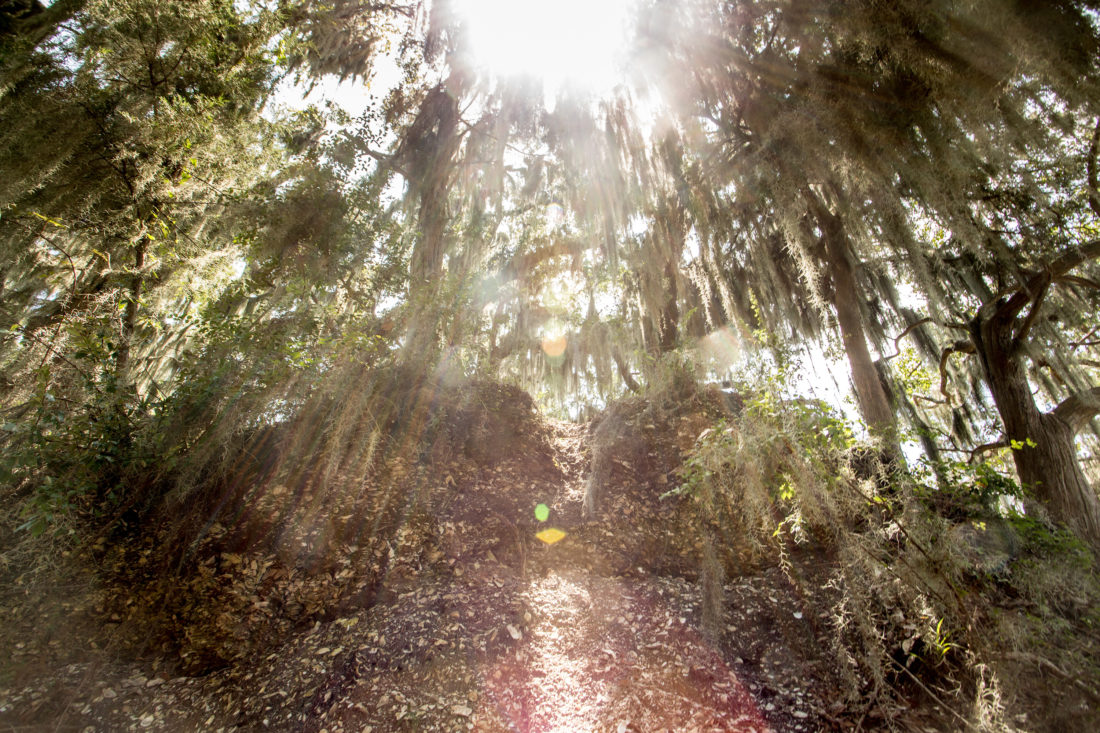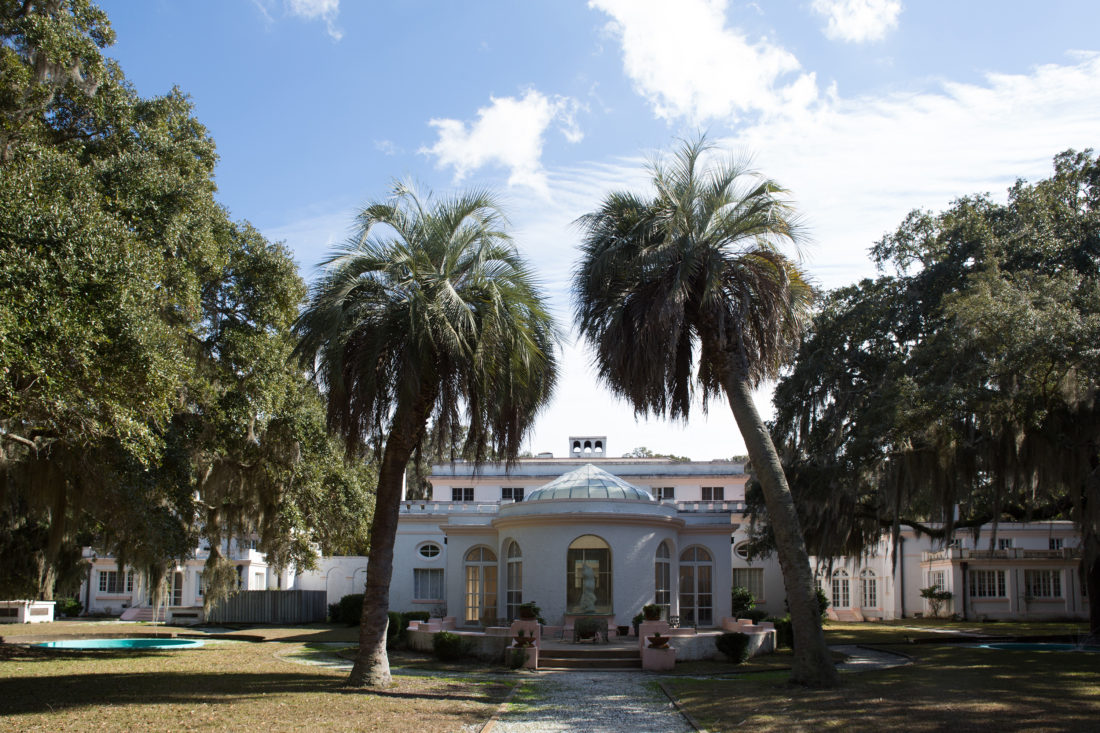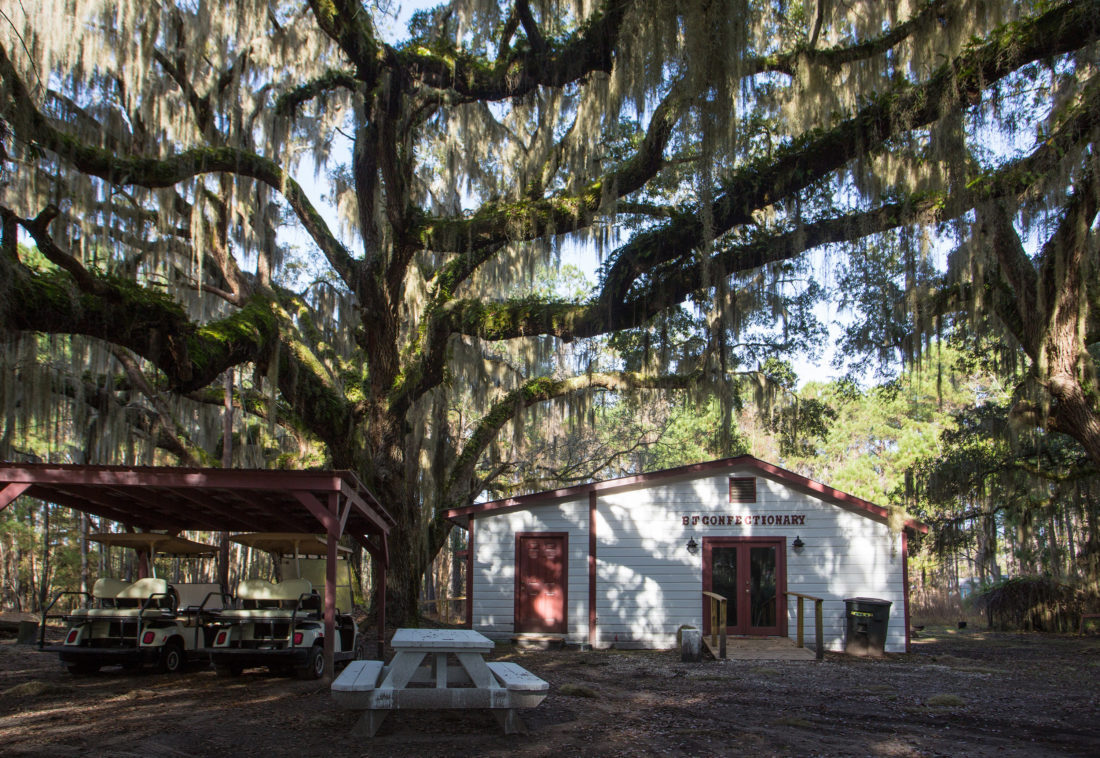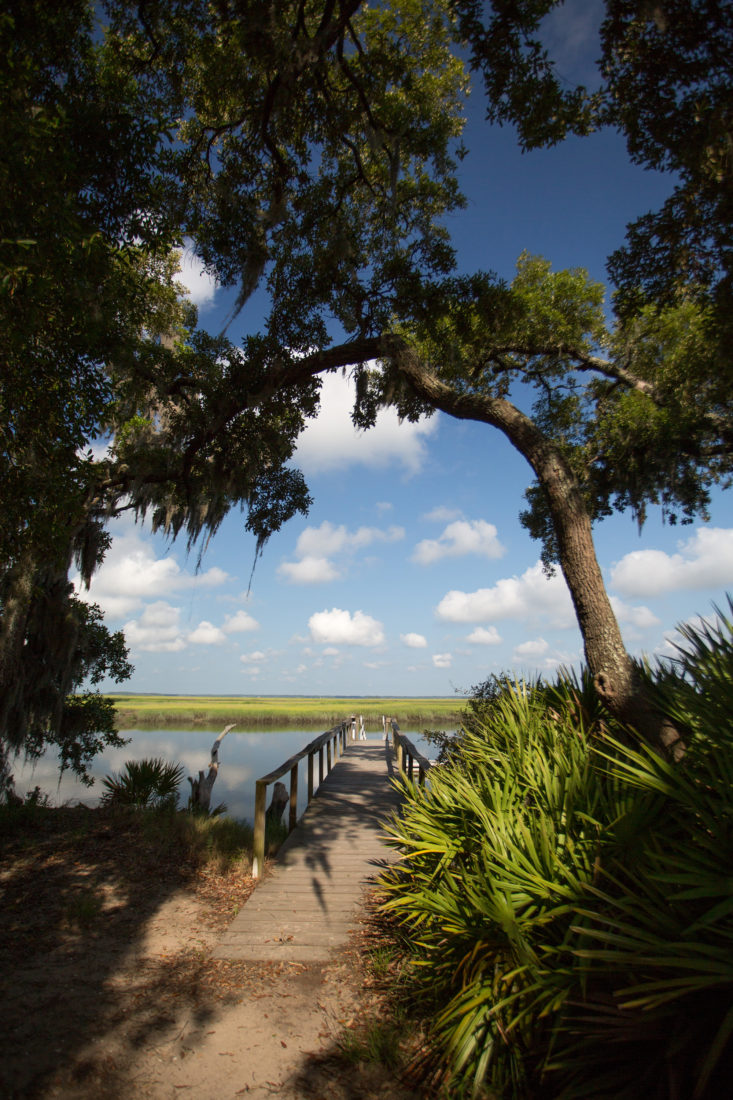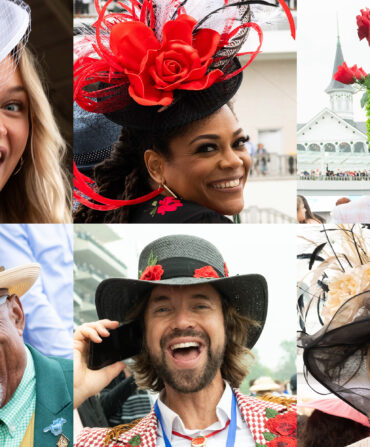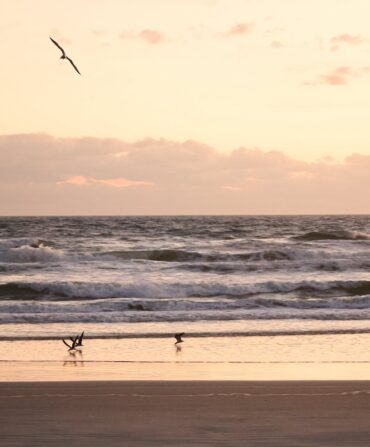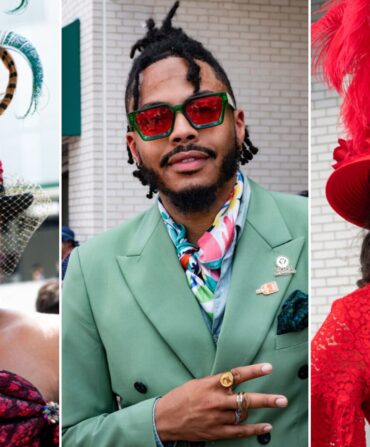
In 1998, the State of Georgia restored the Sapelo light, and it once again became a working aid to navigation.
Photo: Benjamin Galland
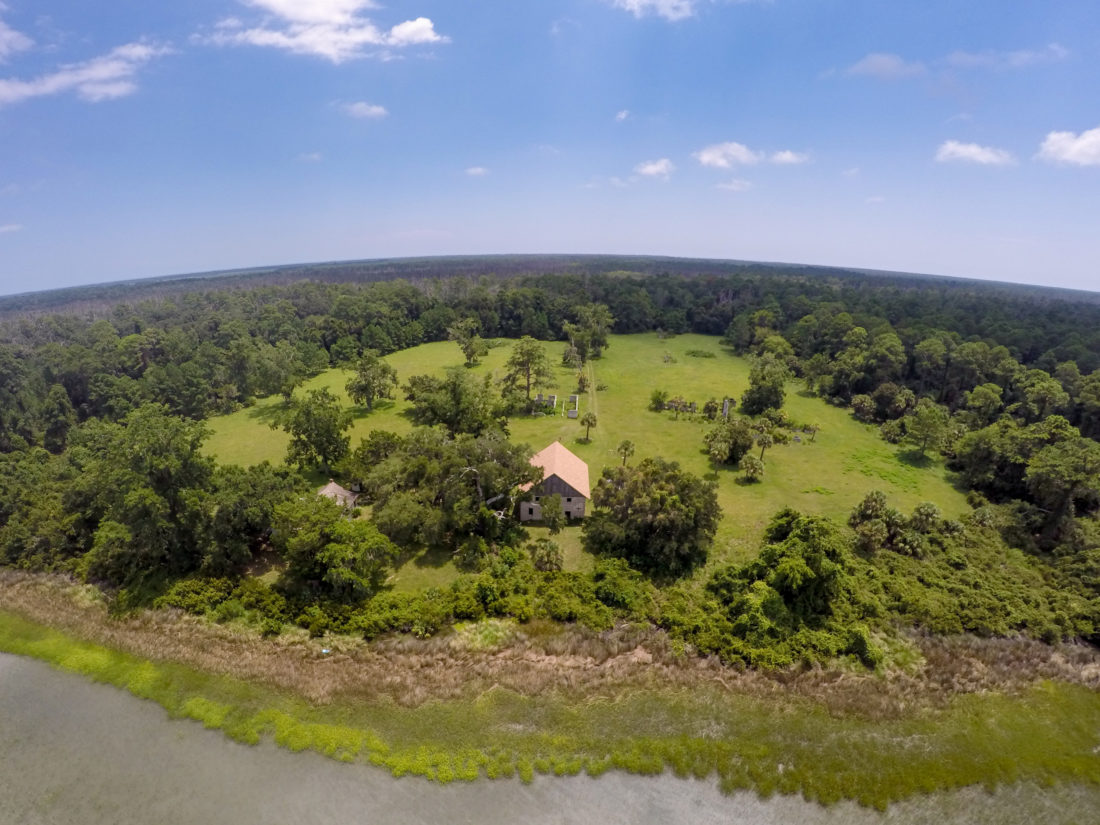
Aerial view of Chocolate plantation on Sapelo’s North End. The cleared areas were once the site of a slave settlement and cotton fields.
Photo: Benjamin Galland
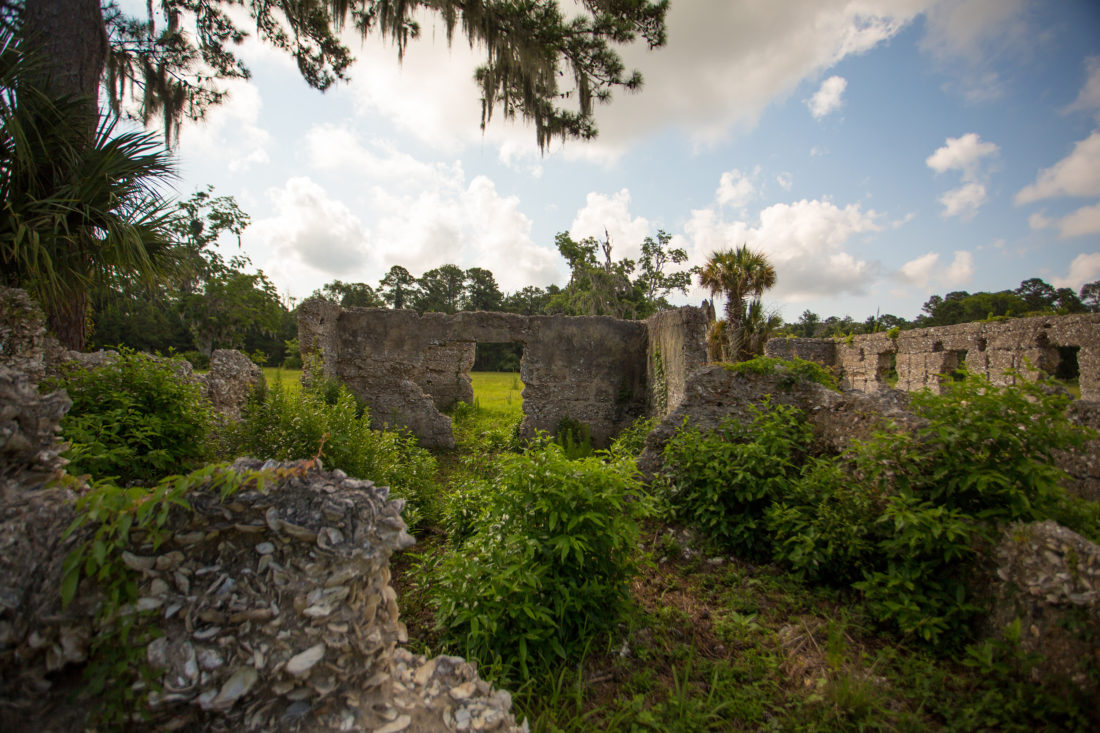
The tabby ruins at Chocolate are some of the most extensive on the Georgia coast.
Photo: Benjamin Galland
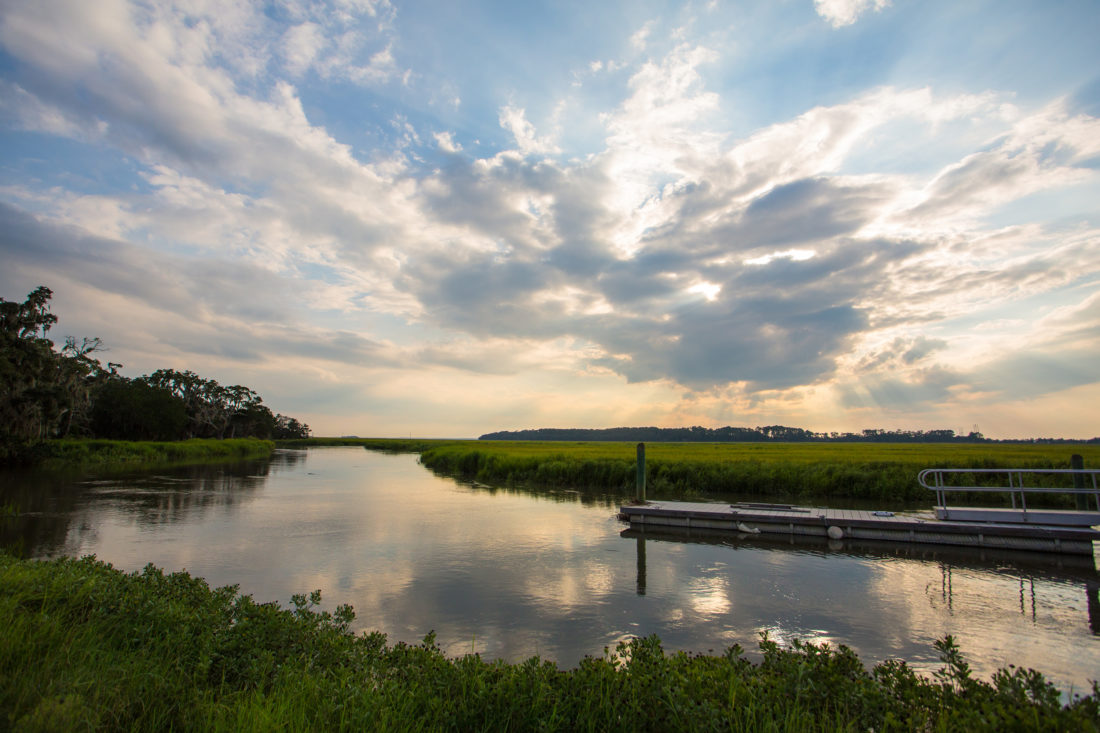
Barn Creek at Long Tabby was the shipping point for Sapelo’s sugar and molasses. This section of the waterway was later renamed Post Office Creek. The view is looking south toward Doboy Sound.
Photo: Benjamin Galland
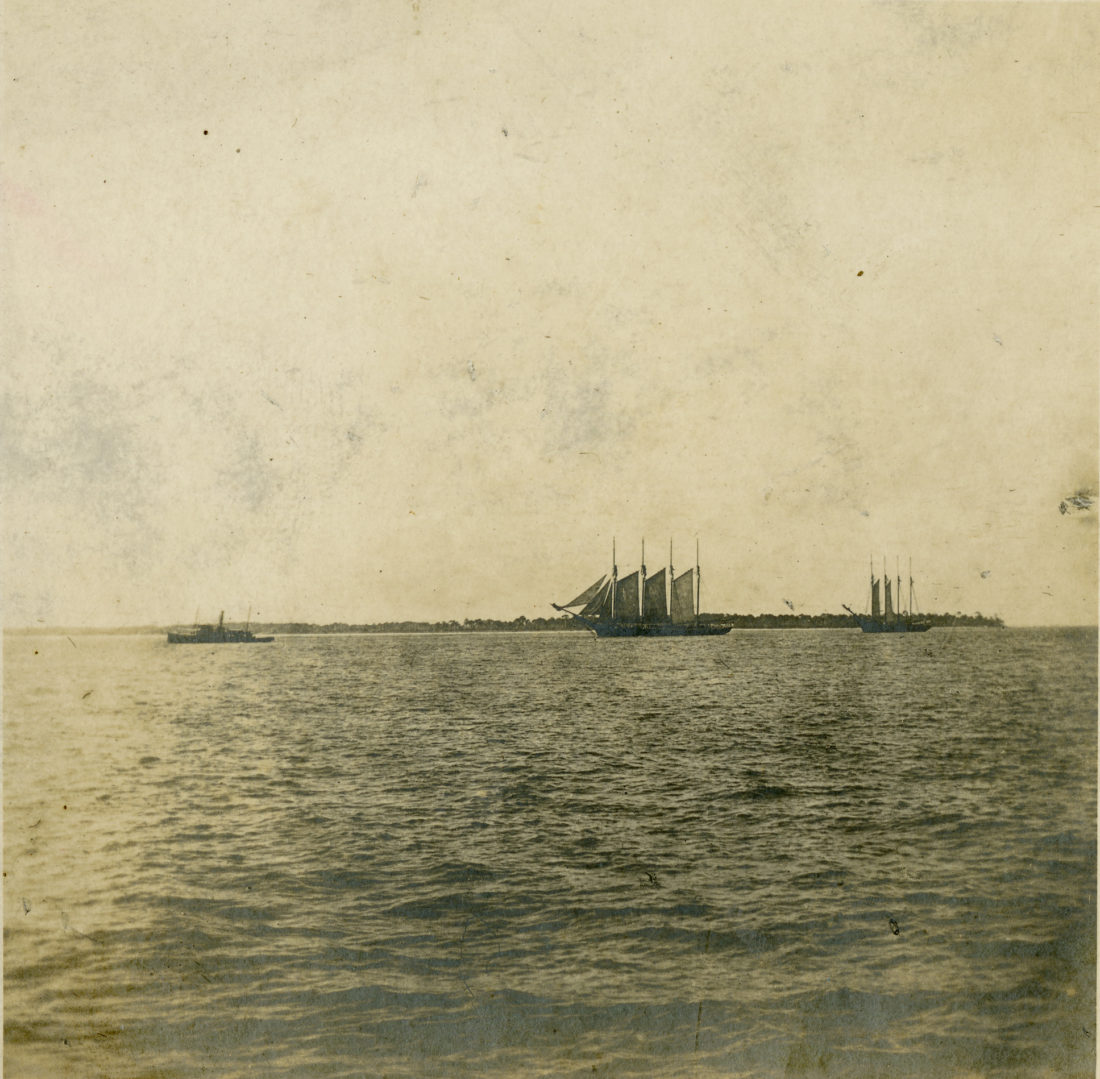
Timber ships in Doboy Sound, circa 1885. Sapelo Island is in the distance.
Photo: Courtesy of the author's collection
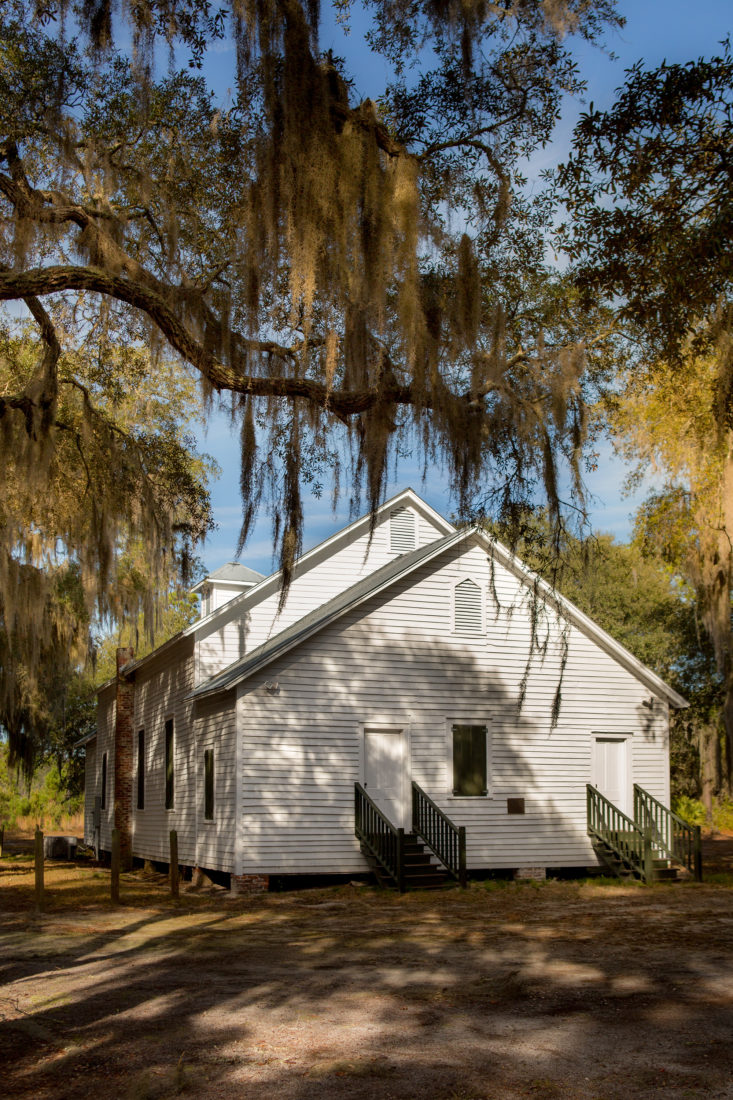
The wood frame African American church built in 1899 at Raccoon Bluff is the only remaining structure in the former community. It was restored in 2000.
Photo: Benjamin Galland
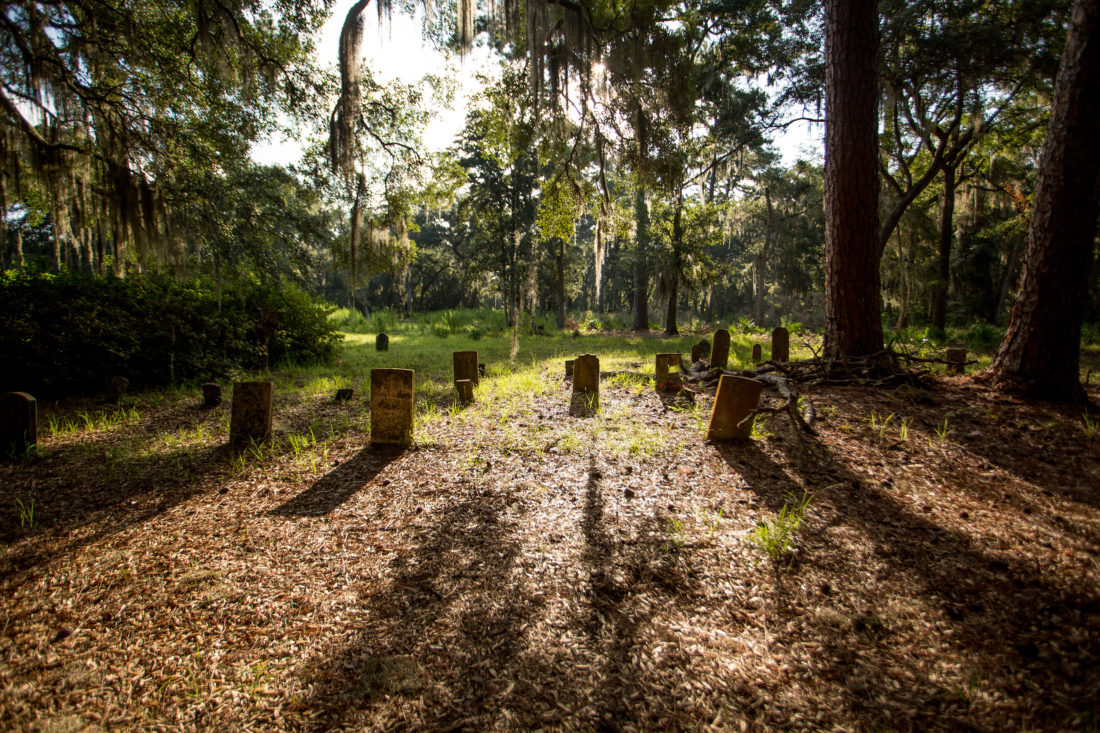
Behavior Cemetery, a burial ground for Sapelo’s Gullah-Geechee people.
Photo: Benjamin Galland
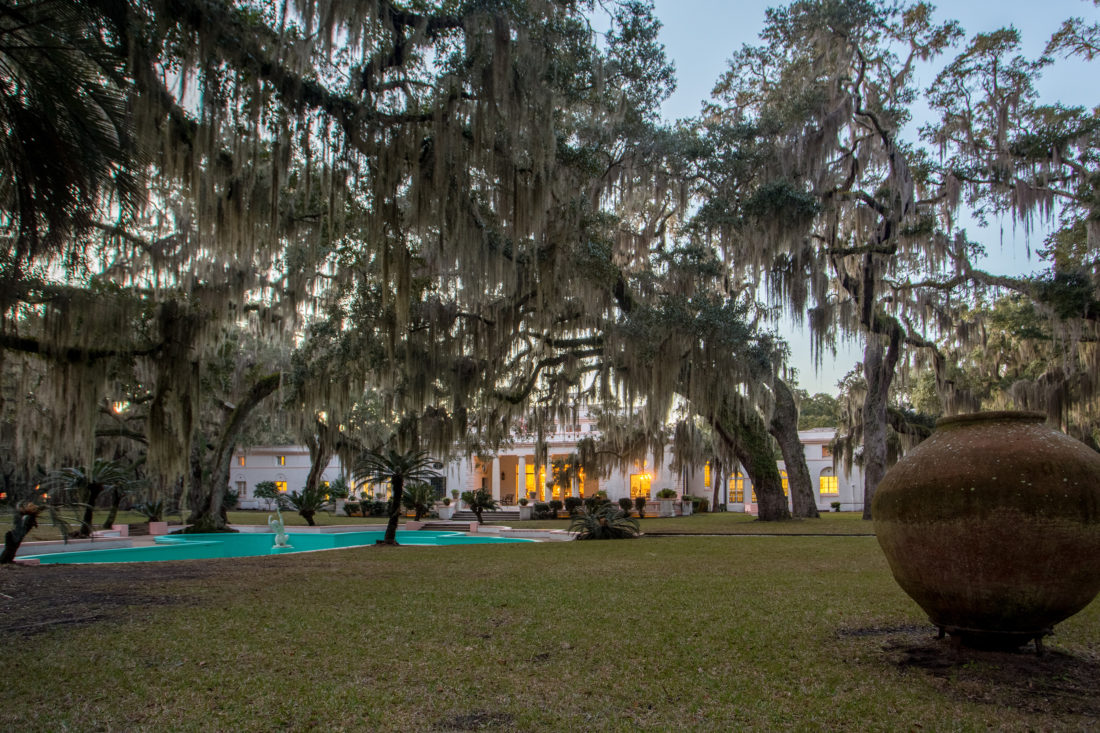
The Coffin-Reynolds mansion today set amid live oaks and Spanish moss on the site selected for the original mansion built by Thomas Spalding.
Photo: Benjamin Galland
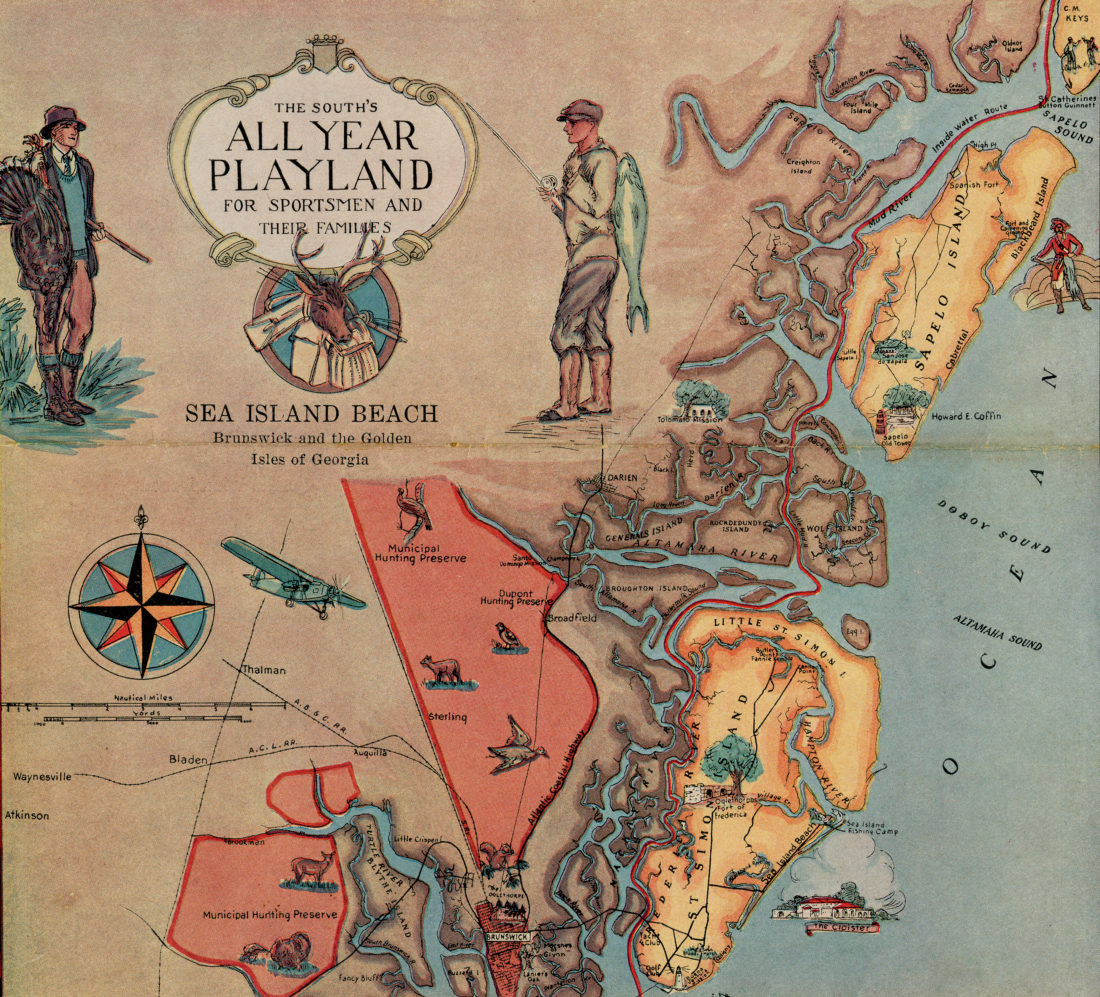
Brochure promoting Sea Island and the Cloister Hotel, produced by the Sea Island Company, late 1920s.
Photo: Courtesy of the author’s collection


